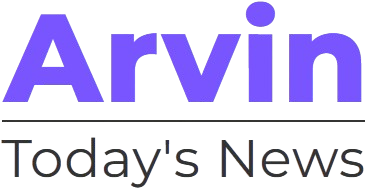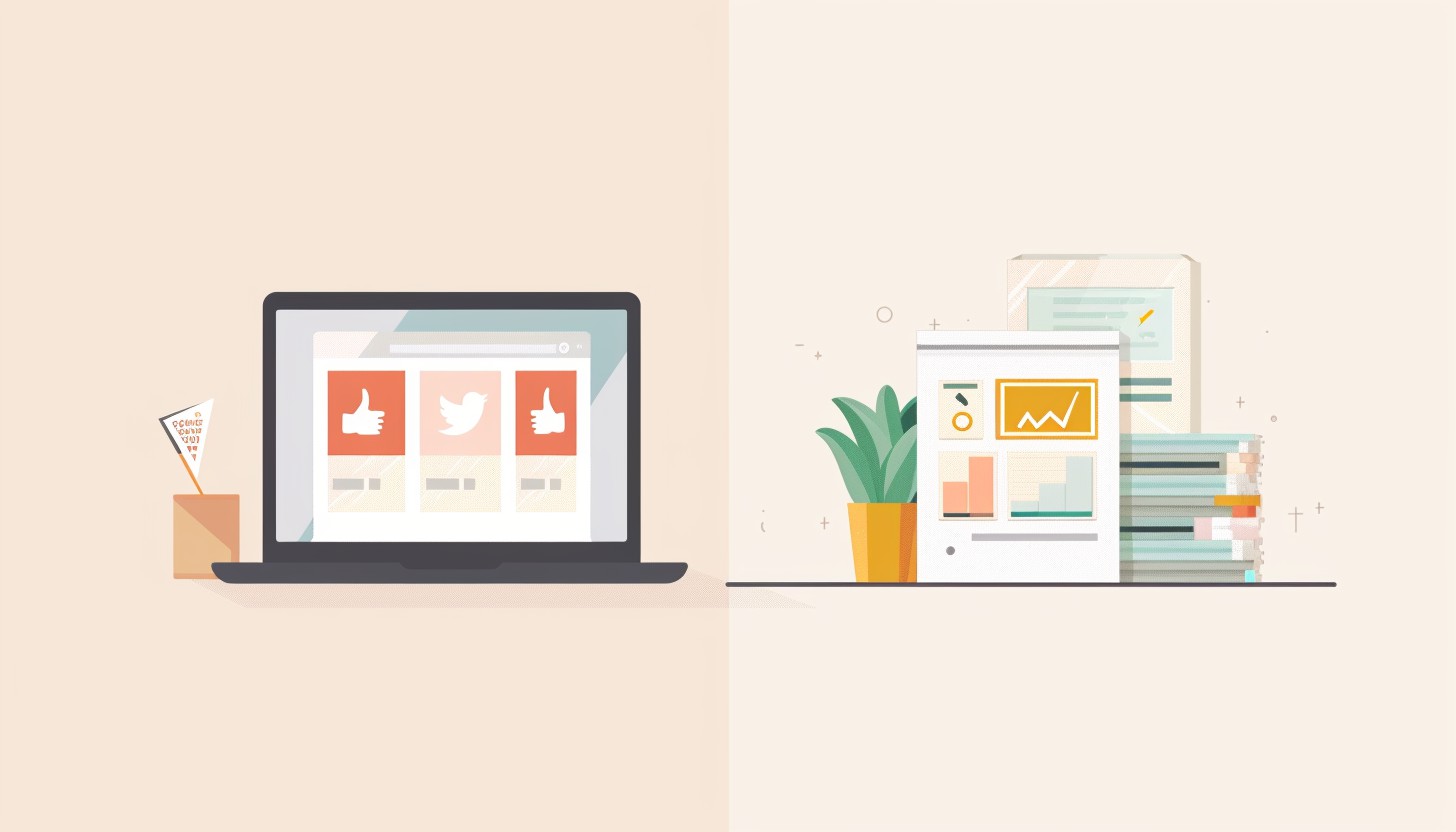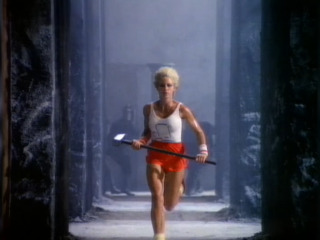Traditional marketing remains the foundation of how businesses have connected with audiences for decades. Despite the rise of digital platforms, traditional marketing continues to play a pivotal role in reaching customers through tangible, time-tested strategies.
What Is the Traditional Marketing?
Traditional marketing refers to the tried-and-true strategies that businesses have relied on for decades to promote their products and services.
Unlike digital marketing, which leverages online channels, traditional marketing focuses on offline methods that connect with audiences in tangible and familiar ways. From captivating TV commercials to eye-catching billboards along busy highways, these approaches have shaped the way brands engage with their audiences.
Traditional Marketing Examples
1. Coca-Cola: “Share a Coke” Campaign (2011)

Coca-Cola revitalized its traditional marketing with a highly personalized twist. The brand replaced its iconic logo on bottles with popular first names and phrases like “Bestie” or “Legend.” While the campaign leaned into mass distribution (a hallmark of traditional marketing), it created a personal connection with consumers.
- Channel: Physical Coca-Cola bottles sold worldwide, supported by TV commercials and outdoor billboards.
- Impact: Coca-Cola saw a 7% increase in sales in the U.S. and a surge in social engagement as people shared photos of their personalized bottles.
Define your brand identity with precision. Use Arvin AI’s Brand Bible Builder to create a cohesive guide that keeps your messaging, visuals, and tone consistent across every platform.
2. Nike: “Just Do It” Campaign (1988)

Nike’s “Just Do It” campaign started with traditional TV and print ads featuring everyday people and athletes. The campaign was designed to inspire viewers to push their limits.
- Channel: TV, print ads, and outdoor advertising.
- Impact: This slogan not only boosted sales but also transformed Nike into a symbol of empowerment and athletic excellence.
Just like Nike’s “Just Do It” campaign relied on bold visuals, your logo should make a statement too. Use Arvin AI’s Logo Maker to craft a design that inspires and captivates across all platforms.
Types of Traditional Marketing
Television Advertising

Apple’s 1984 Super Bowl Commercial
In 1984, Apple was preparing to launch its Macintosh computer—a product designed to democratize technology and challenge the status quo dominated by IBM. Steve Jobs and the Apple team wanted to make a statement that wasn’t just about the product but about the brand’s vision for innovation and individuality. To achieve this, they turned to director Ridley Scott, fresh off the success of his film Blade Runner.
Apple spared no expense for this commercial. With Ridley Scott’s cinematic vision and a budget of $900,000—a staggering amount at the time—the ad felt more like a short film than a commercial.
Apple’s “1984” commercial was a cinematic masterpiece inspired by George Orwell’s dystopian novel 1984. The ad opened with a bleak, totalitarian world, where faceless workers march in unison under the gaze of a giant screen displaying a Big Brother figure—a clear metaphor for IBM’s dominance in the tech space.
As tension builds, a lone woman in vibrant athletic clothing sprints into the scene, wielding a sledgehammer. With one powerful throw, she smashes the screen, shattering Big Brother’s image and symbolizing the Macintosh’s arrival to “save” consumers from conformity. The ad ends with the iconic line:
On January 24th, Apple Computer will introduce Macintosh. And you’ll see why 1984 won’t be like ‘1984.’
Within 100 days of launch, Apple sold over 70,000 Macintosh units, and the commercial is still studied in marketing and film courses, cementing its status as one of the greatest ads of all time.
Print Media

Nike’s Roger Federer Campaign
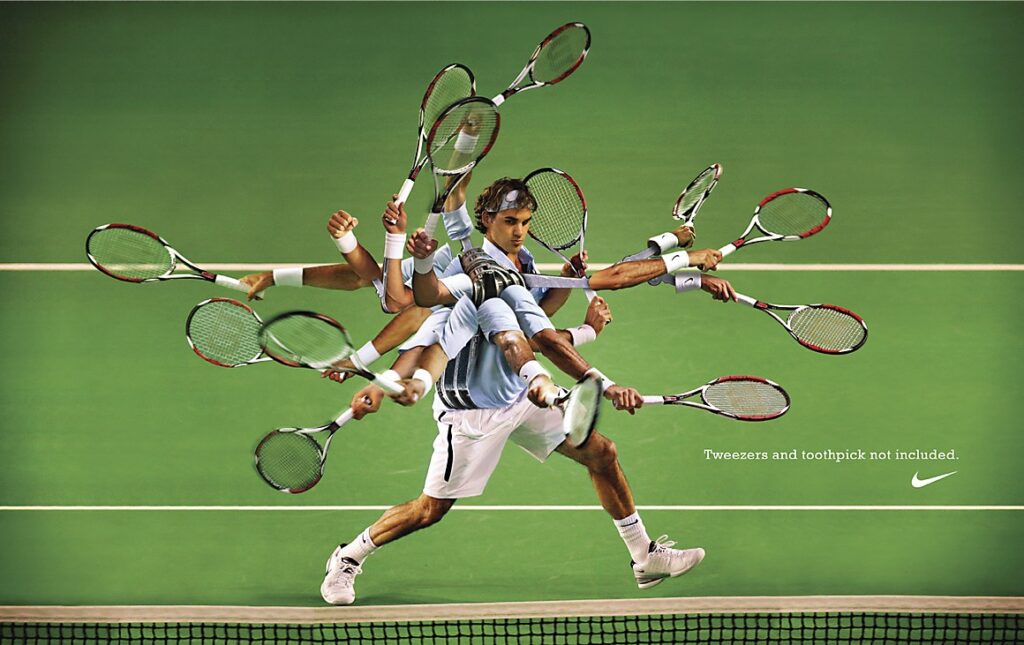
The visual centerpiece of this ad is Federer, portrayed with multiple arms in a dynamic motion that showcases his agility, skill, and precision. The exaggerated imagery communicates a simple but powerful idea: Roger Federer is untouchable. It aligns with Nike’s overarching philosophy of striving for greatness and pushing the limits of what is humanly possible.
The tagline, “Tweezers and toothpick not included,” adds a layer of wit, making the ad not only memorable but also approachable. It humanizes an otherwise extraordinary concept, creating a bridge between Federer’s world-class performance and the everyday aspirations of Nike’s audience.
Outdoor Advertising

Billboards remain one of the most visible forms of traditional marketing.
Coca-Cola’s “Share a Coke” Outdoor Campaign
Coca-Cola’s “Share a Coke” campaign is a masterclass in how outdoor traditional marketing can create both emotional connections and widespread buzz. Initially launched in Australia in 2011, the campaign quickly gained momentum worldwide, using outdoor marketing as a pivotal element. By replacing its iconic logo on Coke bottles with popular first names and phrases, Coca-Cola delivered a fresh twist on personalization while keeping its branding intact. However, what truly set this campaign apart was its ingenious use of outdoor spaces to amplify visibility and engagement.
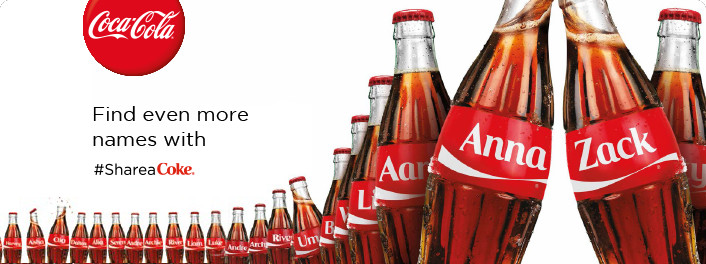
Coca-Cola used large-scale, high-visibility billboards in bustling city centers and along highways to showcase the campaign. Featuring a rotation of names and phrases, these billboards turned a mass advertising medium into something personal and relatable. Imagine walking through Times Square and seeing your name on a Coke bottle—suddenly, the campaign wasn’t just advertising; it was an experience. This sense of inclusion encouraged people to engage with the brand, sparking curiosity and conversation.

Coca-Cola also placed mobile vending machines in high-traffic locations like shopping districts and sports stadiums. These machines allowed customers to print their names directly onto Coke bottles, creating not only a personalized product but also a memorable, shareable moment. Crowds often gathered around these machines, further boosting visibility and word-of-mouth promotion.
The campaign resulted in a 7% increase in Coca-Cola sales in the U.S. and double-digit growth in several other markets.
Personalization makes all the difference, just like Coca-Cola’s “Share a Coke” campaign. Use Arvin AI’s Free Logo Maker to design a logo that connects emotionally with your audience.
Radio
Local businesses like furniture stores and auto repair shops often advertise on radio stations to target nearby audiences. Meanwhile, global brands like Geico create memorable jingles to ensure listeners remember their name.
Event Sponsorships

Sponsoring major events is another way traditional marketing connects brands with their audiences.
Red Bull’s Sponsorship of Extreme Sports Events
When discussing event sponsorships in traditional marketing, Red Bull stands out as a masterclass in innovation and branding. By aligning itself with extreme sports and high-adrenaline activities, the brand has revolutionized how sponsorships can elevate a company’s identity.
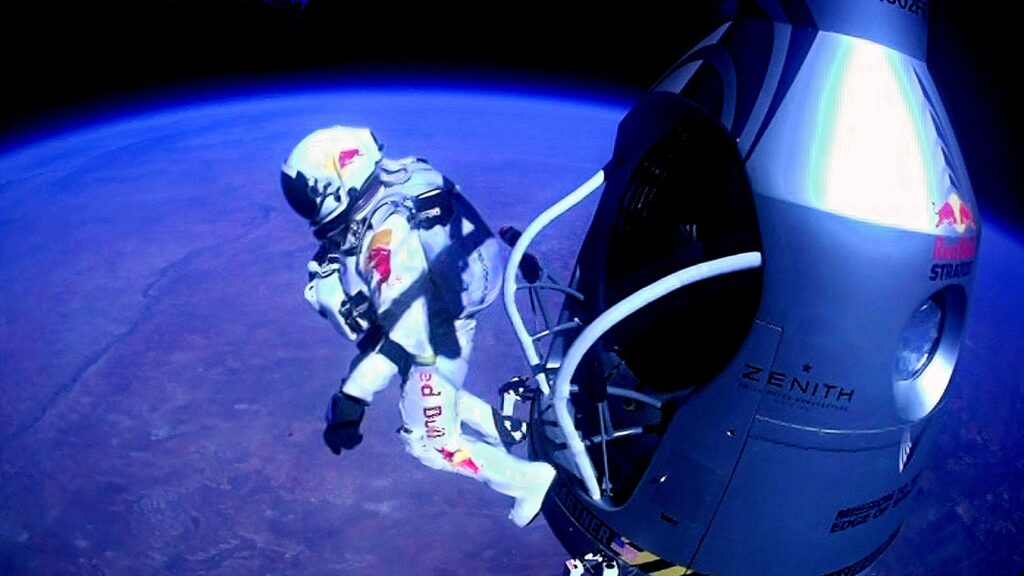
Red Bull Stratos is one of the most iconic examples of how a sponsorship can turn into a global phenomenon. Featuring Austrian skydiver Felix Baumgartner, the event saw him leap from the edge of space, breaking the sound barrier in freefall. This wasn’t just a stunt—it was a groundbreaking event that captivated millions.
A global live broadcast on traditional TV networks, coupled with outdoor advertisements and brand activations. Over 9.5 million live viewers tuned in on YouTube, setting a world record, while the campaign generated billions of impressions globally.
Following the Stratos jump, Red Bull saw a 13% increase in global sales.
Red Bull’s event sponsorships show the power of aligning your brand with experiences. Make your logo event-ready with Arvin AI’s Free Logo Maker today.
Features of Traditional Marketing
| Feature | Description | Example |
|---|
| Mass Reach | Traditional marketing excels at reaching vast audiences through large-scale campaigns. | Super Bowl commercials, which cost millions for a 30-second slot, are watched by over 100 million viewers every year. |
| Tangible Presence | Provides something physical that audiences can interact with, creating a deeper connection. | At its peak, IKEA’s printed catalogs were distributed to over 200 million households annually across 50 markets, reaching 400 million people in 32 languages, with 70% of customers using them for inspiration before visiting stores. |
| Localized Targeting | Enables targeting specific geographic areas effectively. | Local car dealership ads on the radio or community newspapers; bus shelter ads for events in specific neighborhoods. |
| High-Quality Production | Focuses on polished, professional visuals and messaging that elevate brand positioning. | Vogue reaches an estimated 12 million monthly readers across its print editions, with a significant portion falling into high-income brackets. |
| Proven Longevity | Some traditional campaigns continue to resonate for years, reflecting the timelessness of effective branding. | Marlboro’s iconic “Marlboro Man” billboards, which debuted in the 1950s, became one of the most successful ad campaigns in history, helping the brand achieve $27 billion in annual sales by the 1990s. |
Gucci’s magazine ads prove the power of a logo that exudes quality. Make your logo just as timeless with Arvin AI’s Free Logo Maker, perfect for every medium.
What Are the 7 P’s of Traditional Marketing?
| P | Definition | Example |
|---|
| Product | The goods or services offered to fulfill a customer need or desire. | Coca-Cola: Expanding its product range with Diet Coke and Coca-Cola Zero to cater to health-conscious consumers. |
| Price | The cost customers pay for the product, reflecting its perceived value. | Apple: Premium pricing strategy for iPhones, reinforcing its brand as a luxury tech provider. |
| Place | The distribution channels and locations where products are made available to customers. | McDonald’s: Strategic placement in high-traffic locations, from airports to suburban areas, ensuring accessibility. |
| Promotion | The communication strategies used to inform and attract customers to a product or service. | Nike: Leveraging traditional TV ads and billboards featuring sports icons to inspire and engage customers. |
| People | The staff or individuals involved in delivering the product or service to customers. | Ritz-Carlton: Employees trained to provide exceptional customer service, creating a premium hospitality experience. |
| Process | The steps involved in delivering a product or service to customers efficiently and effectively. | Amazon: Streamlined order fulfillment and delivery process, ensuring fast and reliable service. |
| Physical Evidence | The tangible elements that reinforce the brand’s presence and quality, such as packaging or decor. | Starbucks: Cozy interiors, branded coffee cups, and welcoming ambiance, enhancing the in-store coffee experience. |
What Is the Difference Between Digital and Traditional Marketing?
| Aspect | Traditional Marketing | Digital Marketing |
|---|
| Definition | Uses offline channels like TV, print, and billboards. | Leverages online platforms like social media and websites. |
| Reach | Limited to local or regional audiences. | Global reach with precise targeting. |
| Cost | Expensive due to production and distribution. | More affordable with flexible budgeting. |
| Interactivity | One-way communication. | Two-way engagement with customers. |
| Measurability | Hard to measure; relies on estimates. | Easy to track with analytics tools. |
| Targeting | Broad targeting based on location and demographics. | Highly specific targeting using data and algorithms. |
| Examples | TV ads, newspapers, and billboards. | Instagram campaigns, Google Ads, and email marketing. |
Final Words
While digital marketing has revolutionized how brands reach their audiences, traditional marketing holds its ground as a reliable, impactful strategy. Whether it’s Coca-Cola’s iconic campaigns or McDonald’s creative billboards, traditional methods remind us of the power of storytelling and the emotional connections built through tangible experiences. For businesses looking to strike a balance, integrating the timeless appeal of traditional marketing with the precision of digital strategies can create a truly holistic approach to engaging customers. As you navigate your marketing journey, don’t overlook the classic techniques that have stood the test of time.
When it comes to traditional marketing, a well-designed and properly resized logo is not just a visual asset—it’s a critical tool for effective branding. Whether displayed on billboards towering over highways or printed on tiny business cards, your logo must maintain its integrity and impact across various mediums.

Ready to create a logo that stands out on any platform? With Arvin AI’s Free Logo Maker, you can design professional, scalable logos in minutes. Perfect for billboards, business cards, and everything in between—start now and make your brand unforgettable!
FAQ
The 4 P’s of traditional marketing are Product, Price, Place, and Promotion.
The key difference lies in channels and reach:
Traditional Marketing: Utilizes offline channels such as TV, radio, newspapers, billboards, and direct mail. It focuses on broad reach and tangible experiences.
Digital Marketing: Relies on online platforms like social media, search engines, email, and websites. It emphasizes targeted campaigns, real-time tracking, and audience engagement.
Traditional marketing is the use of offline methods to promote products or services. It involves channels like TV, radio, print media, direct mail, and outdoor advertisements. These strategies aim to reach a wide audience, build brand awareness, and foster trust through established mediums.
